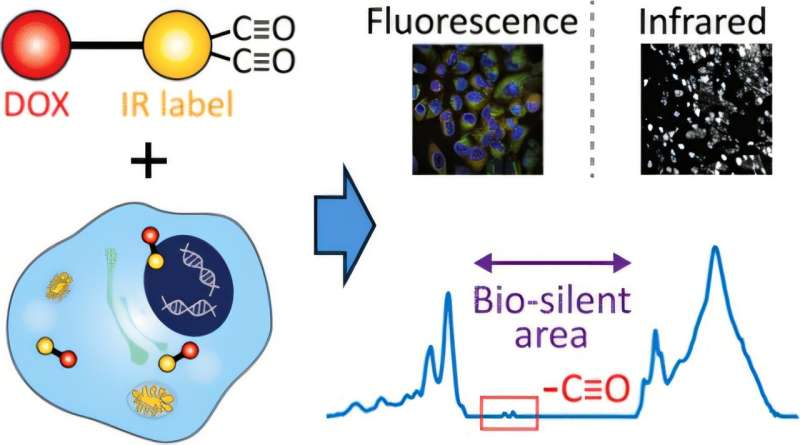This research focuses on a transformed version of a widely used chemotherapy drug, doxorubicin, which makes the previously undetectable drug detectable.
The team driving this research includes Craig Richard, a postdoctoral research fellow at the Cancer Center at Illinois (CCIL), and Principal Scientist at Eli Lilly and Company, Pei-Hsuan Hsieh.
They’re using a version of doxorubicin also known as DOX-IR, which is modified by attaching a metal carbonyl, a chemical compound formed when a metal atom is bonded to one or more molecules of carbon monoxide, which acts as a labeled tracking device by absorbing infrared light, making it easy to detect the drug as it moves through cancer cells with an infrared microscope.

